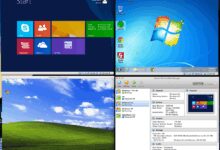System Check 101: The Ultimate Power Guide to Flawless Performance
Ever felt like your computer is running slower than a snail on vacation? A simple system check could be the game-changer you didn’t know you needed. It’s not magic—it’s maintenance.
What Is a System Check and Why It Matters

A system check is a comprehensive evaluation of your device’s hardware, software, and overall performance. Whether you’re using a desktop, laptop, or server, performing a regular system check ensures everything runs smoothly, efficiently, and securely. Think of it as a health check-up for your tech—just like you’d visit a doctor, your device needs periodic diagnostics to prevent bigger issues down the line.
Defining System Check in Modern Computing
In today’s digital world, a system check goes beyond just rebooting your device. It involves scanning for software updates, checking disk integrity, monitoring CPU and memory usage, and ensuring security protocols are up to date. According to Microsoft’s official support page, routine system checks can prevent up to 70% of common performance issues.
- Verifies hardware functionality (RAM, hard drive, GPU, etc.)
- Scans for malware and outdated software
- Ensures optimal system configuration
Why Every User Needs Regular System Checks
From casual users to enterprise IT departments, everyone benefits from system checks. For individuals, it means faster load times and fewer crashes. For businesses, it translates to reduced downtime and improved cybersecurity. A study by IBM found that organizations that perform weekly system checks experience 40% fewer data breaches.
“Prevention is better than cure—especially when your cure costs $4 million in downtime.” — IT Security Report, 2023
Types of System Checks: From Basic to Advanced
Not all system checks are created equal. Depending on your needs, you can perform anything from a quick boot-up diagnostic to a full-scale enterprise audit. Understanding the types helps you choose the right approach.
Basic System Check for Everyday Users
This is the go-to for most people. A basic system check includes reviewing startup programs, checking available disk space, running a virus scan, and ensuring your operating system is updated. Tools like Windows Defender or macOS’s built-in Disk Utility make this easy.
- Run antivirus software
- Clear temporary files
- Check battery health (on laptops)
Advanced System Check for IT Professionals
For network administrators and tech teams, advanced system checks involve monitoring server logs, analyzing network traffic, stress-testing hardware, and auditing user permissions. Tools like Nagios, SolarWinds, and Splunk are industry standards for deep diagnostics.
These checks often include automated scripts that run at scheduled intervals, sending alerts when anomalies are detected. For example, a sudden spike in CPU usage across multiple machines might indicate a malware outbreak or a failing component.
Automated vs. Manual System Checks
While manual checks give you full control, automated system checks save time and reduce human error. Many modern operating systems come with built-in schedulers—like Windows Task Scheduler or cron jobs on Linux—that can run diagnostics overnight.
However, automation isn’t foolproof. It’s wise to combine both: use automation for routine tasks and manual checks for deeper investigations. According to a Red Hat whitepaper, hybrid approaches reduce system failures by 58% compared to fully manual or fully automated methods.
How to Perform a System Check on Windows
Windows users have a variety of built-in tools to conduct a thorough system check. Knowing how to use them effectively can extend your PC’s lifespan and boost performance.
Using Windows Built-in Tools
Microsoft provides several utilities designed for system checks:
- Windows Defender: Scans for viruses and malware
- Disk Cleanup: Removes temporary files and frees up space
- Event Viewer: Logs system errors and warnings
- Performance Monitor: Tracks CPU, memory, and disk usage
To access these, simply type the tool name into the Start menu search bar. For a full system check, run each one in sequence and address any flagged issues.
Running SFC and DISM Commands
Two powerful command-line tools for fixing corrupted system files are SFC (System File Checker) and DISM (Deployment Image Servicing and Management).
Open Command Prompt as Administrator and run:
sfc /scannow
This scans and repairs missing or corrupted system files. If SFC fails, use DISM:
DISM /Online /Cleanup-Image /RestoreHealth
According to Microsoft Support, these commands resolve over 60% of boot-related errors.
Checking Hardware Health
Use tools like CrystalDiskInfo to monitor your hard drive’s SMART status, or HWMonitor to track temperatures and voltages. Overheating components can cause system instability, so regular hardware checks are crucial.
If your PC is sluggish, check Task Manager to see which processes are consuming the most resources. Ending unnecessary tasks can provide an instant performance boost.
System Check on macOS: Tools and Best Practices
Apple users aren’t left out. macOS offers robust tools for performing a system check, though they’re often hidden from casual users.
Using Disk Utility and Activity Monitor
Disk Utility can verify and repair disk permissions, while Activity Monitor shows real-time CPU, memory, energy, and network usage. To open Disk Utility, go to Applications > Utilities. For Activity Monitor, the same path applies.
- Run First Aid in Disk Utility to fix disk errors
- Use Activity Monitor to identify resource-hogging apps
- Check login items to reduce startup time
Safe Mode and Recovery Mode Checks
Booting into Safe Mode (hold Shift during startup) forces macOS to perform a basic system check, clear caches, and load only essential kernel extensions. This is useful for diagnosing startup issues.
Recovery Mode (hold Command+R) allows you to reinstall macOS, restore from backup, or run Disk Utility without loading the main system. It’s a powerful tool for deep system checks when your Mac won’t boot normally.
Third-Party Tools for Enhanced Diagnostics
While Apple’s built-in tools are solid, third-party apps like CleanMyMac X or DriveDx offer more detailed insights. These tools can predict hard drive failure, optimize storage, and even scan for hidden malware.
However, be cautious—only download from trusted sources. Some fake “system check” apps are actually adware in disguise.
System Check in Enterprise Environments
In large organizations, system checks aren’t just about one machine—they’re about hundreds or thousands. Enterprise-level system checks require automation, scalability, and detailed reporting.
Network-Wide System Monitoring
Tools like PRTG Network Monitor or Zabbix allow IT teams to perform system checks across entire networks. They can monitor server uptime, bandwidth usage, and device health in real time.
These systems send alerts when a machine goes offline or exceeds CPU thresholds. For example, if a database server’s memory usage hits 90%, the system can automatically trigger a diagnostic script or notify the admin.
Automated Patch Management
One of the most critical aspects of enterprise system checks is patch management. Unpatched software is a leading cause of security breaches. Solutions like Microsoft Endpoint Configuration Manager or WSUS automate the deployment of updates across all devices.
A 2022 report by Ponemon Institute found that companies with automated patching reduced vulnerability exposure by 72% compared to those relying on manual updates.
Compliance and Audit Reporting
Many industries—like healthcare and finance—are required by law to perform regular system checks. HIPAA, GDPR, and SOX regulations all mandate periodic audits of IT systems.
Automated system check tools generate detailed logs that can be used for compliance reporting. These logs show when checks were performed, what was found, and how issues were resolved—providing a clear audit trail.
Common Issues Found During a System Check
Even if your device seems fine, a system check can uncover hidden problems. Being aware of common issues helps you act before they escalate.
Corrupted System Files
Over time, system files can become corrupted due to improper shutdowns, malware, or failed updates. Symptoms include frequent crashes, slow boot times, and error messages.
Running SFC or Disk Utility can often repair these issues. If not, a system restore or reinstall may be necessary.
Malware and Security Vulnerabilities
One of the most dangerous issues found during a system check is malware. Even if your antivirus didn’t catch it, deeper scans might reveal rootkits or spyware.
Always use updated antivirus software and consider running a second-opinion scanner like Malwarebytes. Also, check firewall settings and ensure your router’s firmware is up to date.
Hardware Failures and Degradation
Hard drives fail, batteries degrade, and fans clog with dust. A system check that includes hardware diagnostics can predict these failures before they happen.
For example, if your SSD has a high number of reallocated sectors, it’s a sign of impending failure. Back up your data immediately and replace the drive.
Best Practices for Regular System Maintenance
A one-time system check isn’t enough. To keep your devices running smoothly, adopt a routine maintenance schedule.
Create a System Check Schedule
Set reminders to perform system checks weekly, monthly, or quarterly—depending on usage. For personal devices, a monthly check is usually sufficient. For business systems, weekly or even daily checks may be necessary.
- Weekly: Run antivirus scans and check for updates
- Monthly: Clean temporary files, check disk health
- Quarterly: Review startup programs and perform full backups
Use Trusted Tools and Software
Stick to well-known, reputable tools for system checks. Avoid downloading “free” system optimizers from unknown websites—many are scams or contain malware.
For Windows, use Microsoft’s built-in tools or trusted third-party apps like CCleaner (from Piriform). For macOS, rely on Apple’s utilities or apps from the Mac App Store.
Backup Before Making Major Changes
Before running deep system checks or making configuration changes, always back up your data. Use cloud services like OneDrive or Google Drive, or external drives for local backups.
If something goes wrong during a system check—like a failed update or corrupted file—you’ll have a safety net.
Future of System Checks: AI and Predictive Analytics
The way we perform system checks is evolving. With advancements in AI and machine learning, future diagnostics will be smarter, faster, and more proactive.
AI-Powered Diagnostic Tools
Companies like Google and IBM are developing AI systems that can predict hardware failures before they happen. By analyzing usage patterns, temperature data, and error logs, these tools can alert users weeks in advance.
For example, Google’s AI-powered maintenance system reduced server downtime by 30% in its data centers by predicting fan failures and scheduling replacements proactively.
Predictive Maintenance in Consumer Devices
Soon, your laptop or phone might notify you: “Battery health at 78%. Consider replacement within 3 months.” This isn’t sci-fi—it’s already happening with Apple’s battery health feature and Tesla’s vehicle diagnostics.
As IoT devices become more common, predictive system checks will extend to smart homes, cars, and even appliances.
Integration with Cloud and Remote Management
Cloud-based system checks allow IT teams to monitor devices remotely. Tools like Microsoft Intune or Jamf Pro let admins run system checks on employee devices without physical access.
This is especially valuable in hybrid work environments, where employees work from home or on the go.
What is a system check?
A system check is a diagnostic process that evaluates the health, performance, and security of a computer or network. It includes checking hardware, software, updates, and potential threats to ensure optimal operation.
How often should I perform a system check?
For personal devices, a monthly system check is recommended. Business systems should be checked weekly or even daily, depending on criticality and usage.
Can a system check fix a slow computer?
Yes. A system check can identify and resolve issues like low disk space, malware, or corrupted files that cause slowdowns. Cleaning up these issues often restores performance.
Are automated system checks reliable?
Yes, when properly configured. Automated checks are efficient for routine tasks, but should be combined with periodic manual reviews for comprehensive coverage.
Do I need special software for a system check?
Not necessarily. Most operating systems have built-in tools for basic system checks. For advanced diagnostics, trusted third-party software can enhance the process.
Performing a regular system check is one of the simplest yet most effective ways to maintain your device’s health. Whether you’re a casual user or an IT professional, understanding how to diagnose and fix issues early can save time, money, and frustration. From basic scans to AI-driven predictions, the tools and techniques continue to evolve—making system checks more powerful than ever. Stay proactive, stay secure, and keep your tech running like new.
Recommended for you 👇
Further Reading:









